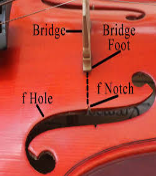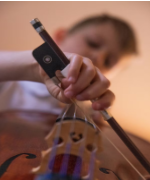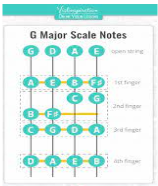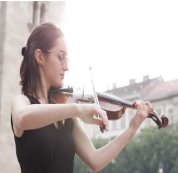The standards for High School Instrumental Music, Beginning Level enable students to begin receiving instruction on wind, percussion, or string instruments of their choice with guidance from the music teacher. Instruction may begin at any high school grade level. Students identify parts of the instrument and demonstrate proper instrument care, playing posture, instrument positions, fingerings, embouchure (if applicable) and tone production. Students apply emerging music skills to create and notate original work. Music literacy skills are emphasized as students read, notate, and perform music. Students use critical thinking to respond to, describe, interpret, and evaluate works of music as performers and listeners. They describe career options in music and investigate how innovative tools and new media impact the music field. Opportunities are provided for students to participate in local, district and regional music events as appropriate to level, ability and interest. Beginning students are expected to furnish their own instruments. No previous experience is required.
No prerequisite required
Essential Question: How does our instrument become our musical voice?
|
Quarter |
Quarter 1 |
Quarter 2 |
Quarter 3 |
Quarter 4 |
|
Unit Title |
Do I choose the instrument or does the instrument choose me? |
Not only can I produce a sound but I can play seasonal music. |
Not only do we read the notes but we read AROUND the notes. |
Look at me! I’ve got this and am ready for more! |
|
Image Cue |

|

|

|

|
|
Focus of the Stor |
We begin with learning the parts of our instrument and how to care for it. Students will practice handling their instrument safely and will demonstrate that care daily. |
We now focus on preparing for our first performance. Students will perform various musical selections that showcase beginning left and right hand technique while reading and performing in the language of music. |
We next move to improving our note reading and writing through scales while exploring pitches on new strings. Students will work on developing their tone and note reading fluency while learning more challenging exercises. |
We end our year with solo and small ensemble music which requires increased and individual ownership on their instruments. Students will explore more challenging bow strokes, new scales, and will be able to perform while focusing on posture, counting, and tone quality. |
|
Transfer Goals |
Understand and find meaning in music as a form of community engagement through involvement as a performer, supporter, advocate, and audience member. Explore and connect personal interests, experiences, and aspirations through vocation, advocation, and arts patronage. Use music literacy to demonstrate understanding of the elements of music and the ways they inform artistic performance and creative expression. |
Understand and apply creative processes to guide the development of ideas, original works, and musical performance. Analyze, interpret, and evaluate musical works from a variety of cultures. Understand and find meaning in music as a form of community engagement through involvement as a performer, supporter, advocate, and audience member. Explore and connect personal interests, experiences, and aspirations through vocation, advocation, and arts patronage. Use music literacy to demonstrate understanding of the elements of music and the ways they inform artistic performance and creative expression. |
Understand and apply creative processes to guide the development of ideas, original works, and musical performance. Analyze, interpret, and evaluate musical works from a variety of cultures. Understand and find meaning in music as a form of community engagement through involvement as a performer, supporter, advocate, and audience member. Explore and connect personal interests, experiences, and aspirations through vocation, advocation, and arts patronage. Use music literacy to demonstrate understanding of the elements of music and the ways they inform artistic performance and creative expression. Use technology as a strategic mechanism for improving music literacy and improving music performance |
Understand and apply creative processes to guide the development of ideas, original works, and musical performance. Analyze, interpret, and evaluate musical works from a variety of cultures. Understand and find meaning in music as a form of community engagement through involvement as a performer, supporter, advocate, and audience member. Explore and connect personal interests, experiences, and aspirations through vocation, advocation, and arts patronage. Curate a portfolio of accomplishments, experiences, and performance materials exhibiting oneself as an artist. Use music literacy to demonstrate understanding of the elements of music and the ways they inform artistic performance and creative expression. Use technology as a strategic mechanism for improving music literacy and improving music performance. |
|
Learning Targets |
I can demonstrate understanding of classroom expectations and procedures. I can demonstrate my knowledge of music through a Pre-Assessment. I can clap and count rhythms from sight-reading factory. I can identify and define music staff basics. I can demonstrate proper playing position and bow usage. I can read, write, and perform whole steps and half steps of 1-octave D, G, and C Major scale. I can identify and count in various time signatures. I can identify and define music staff basics. I can review proper bow hold and instrument posture. I can read and identify pitches on all strings. I can hold my bow and instrument properly. I can read and perform selections chosen for the winter concert. |
I can demonstrate mastery of bow control and distribution through scales. I can extend method book exercises and apply the concepts to my concert literature. I can extract important rhythms, articulations, bowings and other key concepts from my concert literature and apply them in my scales and sight-reading exercises. I can apply new rhythms and articulations to the daily scale warm-up. I can explain the importance of historical elements from various time periods and composers play on music composition. I can demonstrate understanding of whole steps, half steps and enharmonics and how they function within a scale. I can demonstrate mastery and explain the importance of proper concert etiquette. I can read and interpret the sharps and flats and be able to derive the name of the scale from a given key signature. I can demonstrate growth in mastery throughout the year on my mid-year assessment. |
I can demonstrate mastery of bow control and distribution through scales. I can extract important rhythms, articulations, bowings and other key concepts from performance literature and apply them in my scales and sight-reading exercises. I can extend method book exercises and apply the concerts to my concert literature. I can apply new rhythms and articulations to the daily scale warm-up. I can extract important rhythms, articulations, bowings, and other key concepts from my Spring concert literature and apply them in my scales and sight-reading exercises. |
I can demonstrate mastery of bow control and distribution through scales. I can extract important rhythms, articulations, bowings, andnother key concepts from my performance literature and apply them in my scales and sight-reading exercises I can apply new rhythms and articulations to the daily scale warm-up. I can demonstrate mastery of bow control and distribution through scales I can apply important rhythms, articulations, bowings, scale exercises and apply them in my solo or ensemble music. |
